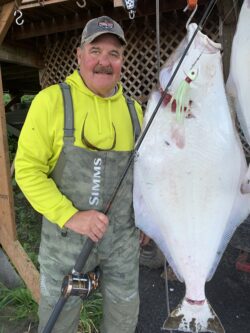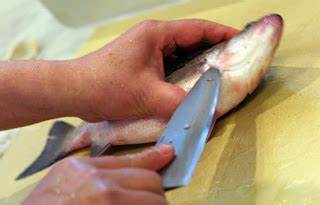 Anglers enjoy eating fresh fish that tastes great. How you care for your catch will determine how well the fish will eat. If you do not address your fish immediately, bad flavors and taste will surface. Decay and degradation begin immediately after the fish is dead.
Anglers enjoy eating fresh fish that tastes great. How you care for your catch will determine how well the fish will eat. If you do not address your fish immediately, bad flavors and taste will surface. Decay and degradation begin immediately after the fish is dead.
Bleeding a fish means exactly that. The angler is draining all the blood from their fish that they plan to eat. This practice is the most common for saltwater fish. Salmon, tuna, halibut, and other species produce large amounts of lactic acid, when being caught. This chemical, and other potential contaminants, are in the muscles of the fish and will flow out with the blood. It is more important to bleed larger fish. Freshwater fish do not accumulate as much lactic acid, but it is a good idea to bleed the larger ones. Freshwater Trout are salmonoids and bleeding large ones makes cleaning easier and fish taste fresher.
Blood contains bacteria that quickly begins to degrade the fish upon death. To ensure the best quality fish, care for the fish immediately.
Dispatch the fish use a Billy Club to knock the fish out or stick a spike or knife blade into the fish’s brain to kill it. Humane care is important. Hanging them on a stringer for hours will ruin the fish. The lactic acid will build up as the struggle to escape or flop around in a creel or ice chest. If you just throw the fish on the bank or into a cooler alive, it takes 4-10 minutes for the fish to die. Humanely dispatch it immediately.
Bleed the fish Make a cut at the tail base to sever the artery. You can also rip the gills apart or slice them off the fish. Depending upon the fish size, it may take 15 minutes to bleed the fish. Rinse before putting them on ice.
Place the fish on ice cool bled fish will filet more easily and create less waste and mess.
Filet or process the fish Use a sharp blade to cut the fish into the filet or portions you prefer.
Sweeten the filets/ rinse thoroughly in cold water Once you Sweeten the fish, you will discover how much more crud is separated from the meat you plan to eat. A thorough cold-water rinse/soak is important.
SWEETENING FISH Mix 1 tbsp of salt and Baking Soda per 1 gallon of cold water. Submerge cleaned filets/fish into the bath and hold down with a plate. Refrigerate for 4-6 hours. Rinse and drip dry on paper towels. Package or prepare for dinner.
Freeze or preserve immediately Use multiple wraps of to prevent freezer burn. Freezing fish in water in a container is also popular for long term storage.
In the best-case scenario, frozen fish is best used within 3-6 months. Canned fish are good for a year or so. If you are not using the fish within these time limits, you need to keep fewer fish or share them with friends.
When sharing fish with friends, provide a few recipes that you like.
Enjoy Fresh and Delicious fish!
Montana Grant




